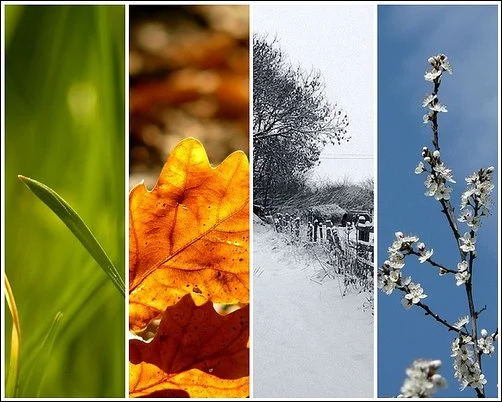Natural State Gardening is a weekly blog about organic gardening techniques.
Plants grow best when planted in their preferred temperature ranges. When grown outside of these temperature ranges, plants will strain to protect themselves from the uncomfortable conditions, leaving little energy for growth and self-protection from diseases and pests.
So, I have divided crops into several categories based on their preferred temperature ranges. In our ever-changing climate, it is helpful to know plants’ preferred temperature ranges in addition to the traditional planting dates. Here are the preferred temperature ranges (derived from How to Grow More Vegetables by John Jeavons):
COOL (roughly 40-85° F, ideally 60-75° F):
- 40-75° F: beet, broad bean, broccoli, Brussels sprouts, cabbage, chard, collards, horseradish, kale, kohlrabi, parsnip, radish, rutabaga, sorrel, spinach, turnip
- 45-75° F: artichoke, carrot, cauliflower, celeriac, celery, Chinese cabbage, endive, Florence fennel, lettuce, mustard, parsley, pea, potato
- 45-85° F: chicory, chive, garlic, leek, onion, salsify, shallot
WARM (roughly 50-90 ° F, ideally 60-75° F):
- 50-80° F: bean, lima bean
- 50-90° F: pumpkin, squash
- 50-95° F: corn, cowpea, New Zealand spinach
- 60-90° F: cucumber, muskmelon
HOT (roughly 65-95° F, ideally 70-85° F):
- 65-85° F: sweet peppers, tomato
- 65-95° F: eggplant, hot peppers, okra, sweet potato, watermelon
Here are the rough planting dates that correspond to the above temperatures (reference the “Coastal” column for a close approximation to Central Arkansas planting dates): https://www.southernexposure.com/plantingdates.pdf. NOTE: The average last spring frost in Central Arkansas is roughly early April, and the first fall frost is roughly the beginning of November.
Cool season crops can be planted both for spring and fall (hence the two planting date ranges you see for some crops), while warm and hot season crops can only be planted for summer. You might be wondering, based on the planting dates linked above: “Why would I plant beets or carrots in August when they are listed as COOL crops?” Well, first off, most crops prefer warm temperatures for germinating. More importantly, carrots and beets take roughly 2 months to mature. This means they would be growing primarily in the cooler September and October weather when temperatures average around an ideal 70° F. Planting much later than early September would contend with potential freezing weather starting in November.
Additionally, there is a set of crops that is especially cold hardy (cold tolerant) that can be grown throughout winter, especially with protection from the cold (such as row cover or a greenhouse). These specific crops from Eliot Coleman’s The Winter Harvest Handbook include: bull’s blood beet greens, claytonia, minutina, mache ‘vit’, endive ‘bianca riccia’, lettuces ‘red oakleaf’ ‘red salad bowl’ ‘tango’ ‘rex’ and ‘rouge d’hiver’. Here is an idea of planting dates for winter hardy crops, including some of the aforementioned crops: http://www.southernexposure.com/growing-guides/fall-winter-quick-guide.pdf. NOTE: Here in Central Arkansas, we can plant about two weeks later into the fall than these dates indicate.
Though the cold hardy crops can withstand cold temperatures, they must be planted and established before the “solar winter” or “Persephone months” – when the sun is at its lowest point in the sky and when daylight dwindles to less than 10 hours. Plants will struggle to mature during this period, but will continue to produce if already well-established by this point. Solar winter is roughly from November to Mid-January in Arkansas. So, closely follow recommended planting dates to avoid getting stuck in the solar winter without a bountiful winter harvest.
Finally, there are ways to expand planting dates and extend the season for your crops.
Here are some ways to enjoy your favorite crops for a larger portion of the year:
- Buy especially heat or cold tolerant varieties. Take lettuce for example: ‘jericho romaine’ grows great during the summer, and ‘rouge d’hiver’ can withstand winter temperatures.
- Mulch (such as straw or leaf mulch) can help keep soil temperatures consist, to avoid extreme hot or cold temperature attacks on your plants.
- Pick appropriate micro-climates for your plants. Examples: a shady spot under tomato plants for lettuce during the summer, or an especially warm and sunny spot next to a stone path or brick wall that radiates heat for extending the harvest from your summer crops.
- Row covers and greenhouses can extend harvests of summer crops into the fall, and can extend harvests of fall crops into the winter.



Comments (0)
Thanks for your comment!
Thanks for your feedback! Your comments have been successfully submitted! Please note, all comments require admin approval prior to display.
Error submitting comment!
There is a problem with your comment, please see below and try again.